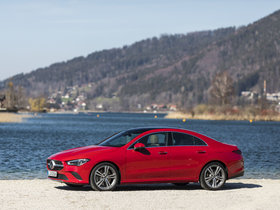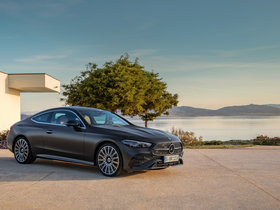How the Mercedes-Benz Passive Safety Systems Protect You and Your Passengers
April 15 2025,

When you drive a Mercedes-Benz, you're surrounded by sophisticated engineering designed with one purpose: to protect you and your loved ones in the event of a collision. While active safety features work to prevent accidents, passive safety systems form the last line of defense when an impact occurs.
The Mercedes-Benz lineup continues the brand's legacy of safety innovation with enhanced passive protection features that demonstrate why Mercedes-Benz remains at the forefront of automotive safety. From the carefully engineered body structure to strategically placed airbags, each element works in harmony to create a comprehensive safety system that activates automatically when needed.
Engineered Protection: High-Strength Steel Construction
At the core of every Mercedes-Benz vehicle is an advanced body structure built using ultra-high-strength steel and aluminum alloys. These materials create a foundation that's both lightweight and exceptionally strong—a critical balance that enhances both safety and efficiency.
Mercedes-Benz engineers strategically reinforce critical areas with boron steel that's up to four times stronger than conventional steel. This material appears in key structural elements like roof pillars, side sills, and front/rear sections. The result is a body structure that maintains its integrity during impact forces that would deform conventional materials.
The strategic distribution of these materials throughout the vehicle creates a safety system that begins working the moment an impact occurs, channeling forces away from the passenger compartment while absorbing and dissipating energy.
Impact Absorption: Mercedes-Benz Crumple Zone Design
The 2025 Mercedes-Benz lineup features precisely engineered crumple zones that act as sacrificial areas during a collision. These zones compress in a controlled manner, extending the time of impact and reducing the forces that reach the passenger compartment.
Front and rear crumple zones incorporate multiple load paths that distribute crash energy through the vehicle structure. This engineering approach prevents energy from taking a direct path to the passenger compartment, instead redirecting it through structural members designed to deform progressively.
The multi-stage deformation process happens in milliseconds, with different structural elements activating sequentially based on impact severity. This graduated response ensures the vehicle absorbs exactly the right amount of energy for each specific collision scenario.
Life-Preserving Space: The Mercedes-Benz Safety Cell
Surrounding the passengers in every 2025 Mercedes-Benz is an ultra-rigid safety cell designed to maintain survival space even under extreme impact conditions. This reinforced passenger compartment resists deformation while the surrounding crumple zones absorb energy.
The safety cell incorporates reinforced roof structures, specially designed door beams, and strengthened floor panels that work together to create a protective cocoon. Cross-members beneath the floor add further protection against side impacts and rollovers.
What makes the Mercedes-Benz approach particularly effective is how these structures connect—each junction point is reinforced to maintain structural integrity throughout the entire safety cell. This comprehensive approach prevents the passenger compartment from collapsing inward, preserving the vital space needed for survival.
Comprehensive Airbag Protection Strategy
The Mercedes-Benz lineup complements its structural safety with a comprehensive airbag system that delivers protection from multiple directions. Front airbags deploy at different rates based on crash severity, while side airbags guard against lateral impacts.
Window curtain airbags extend from the A-pillar to the C-pillar (or D-pillar in SUVs), protecting occupants' heads during side impacts or rollovers. Many models also feature knee airbags that help position front passengers properly during a collision and prevent sliding under the seatbelt.
Mercedes-Benz has refined its airbag placement strategy based on extensive crash research, positioning each airbag precisely where it provides maximum protection with minimal risk. Advanced sensors throughout the vehicle determine which airbags should deploy and at what force, customizing the response to each specific crash scenario.
Beyond Standards: Mercedes-Benz Safety Testing
The passive safety systems in your Mercedes-Benz have undergone testing far beyond what regulatory standards require. Mercedes-Benz operates one of the world's most advanced crash test facilities, where engineers simulate countless collision scenarios.
These tests include standard frontal, side, and rear impacts, plus more specialized evaluations like small overlap crashes, rollover scenarios, and multi-vehicle collisions. Mercedes-Benz also analyzes real-world accident data through its accident research program, which has been operating for over 50 years.
Computer simulations complement physical testing, allowing engineers to evaluate thousands of crash scenarios virtually before building physical prototypes. This comprehensive approach ensures that when a Mercedes-Benz faces a real-world collision, its passive safety systems respond exactly as designed.
Protection You Can Trust
The passive safety systems in your 2025 Mercedes-Benz represent decades of safety engineering refinement. While we hope you never experience their capabilities firsthand, there's profound reassurance in knowing these systems stand ready to protect you and your passengers.
Experience the security of driving a vehicle designed with safety as a fundamental principle. Visit Mercedes-Benz Laval to learn more about the comprehensive safety features in the 2025 lineup and discover which model offers the perfect combination of luxury and protection for your needs.




